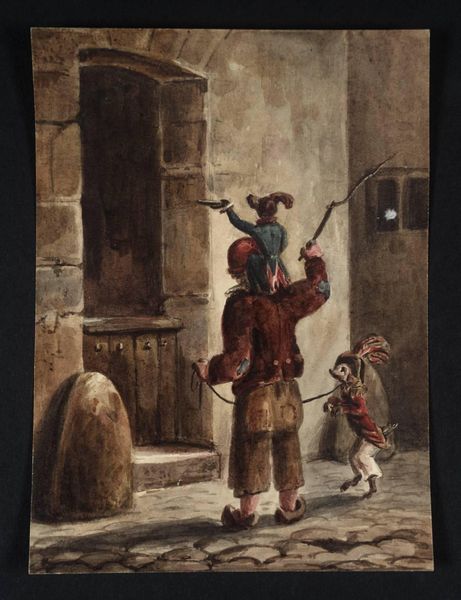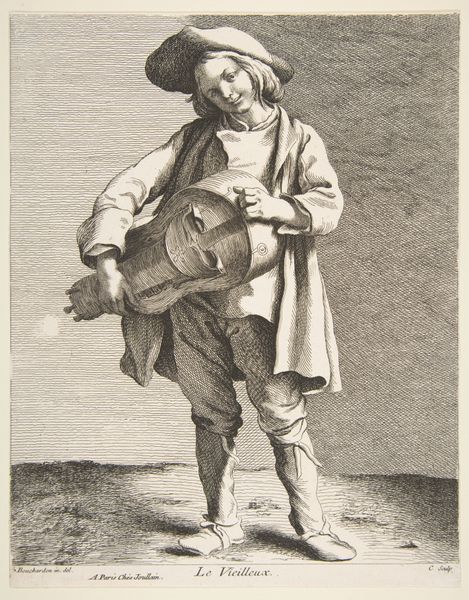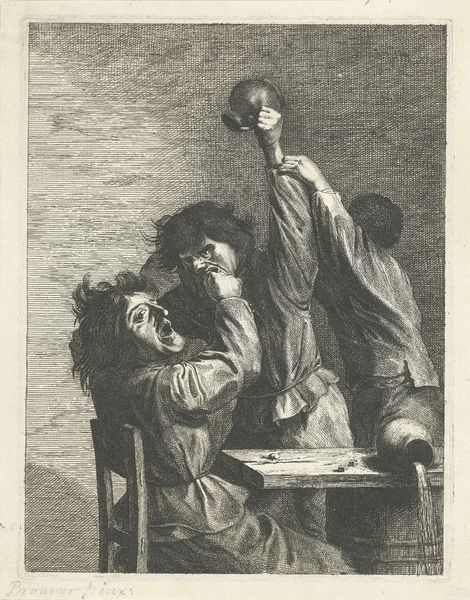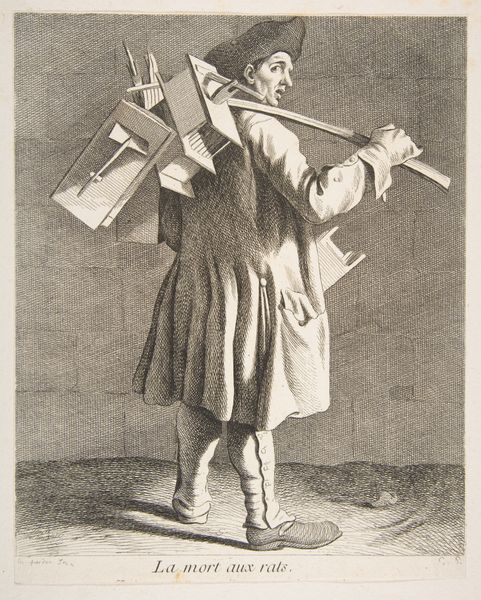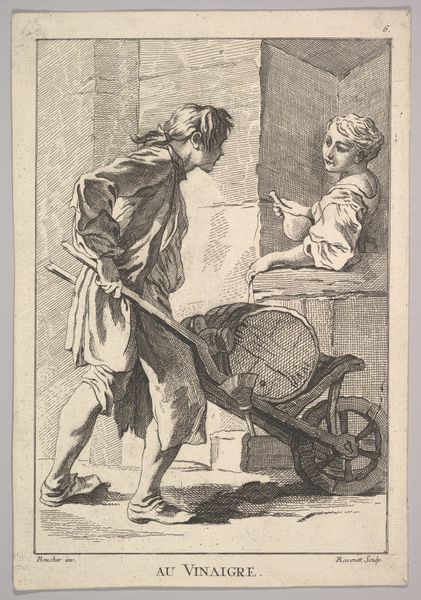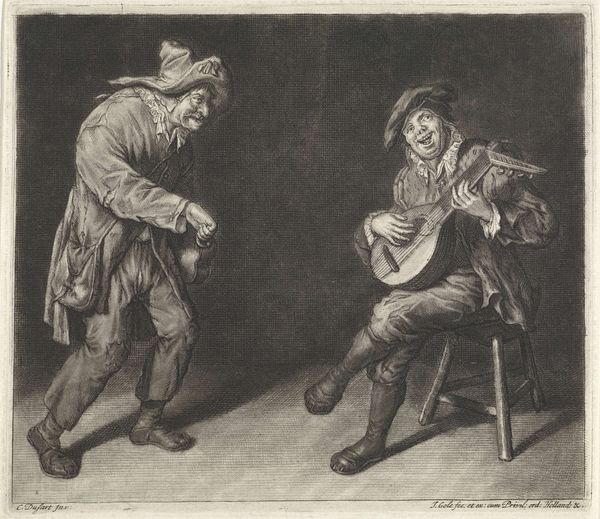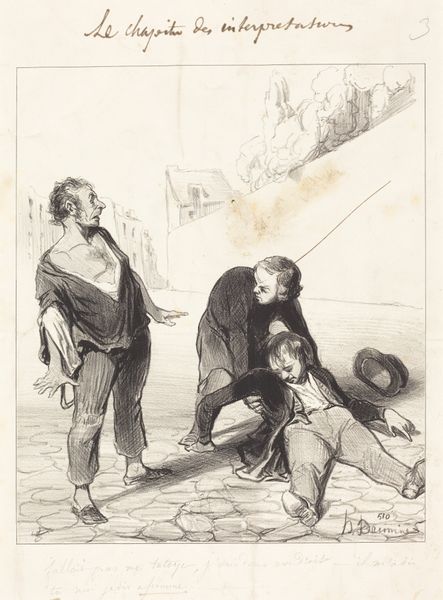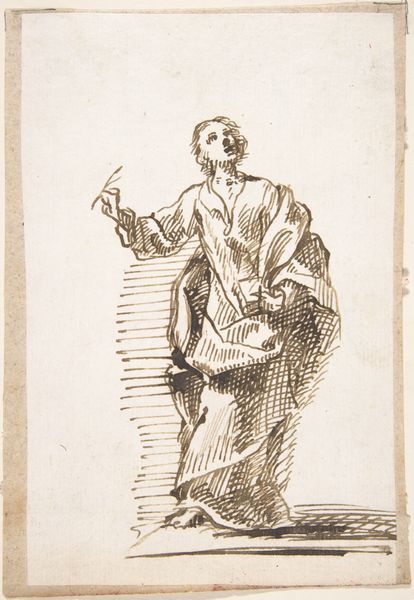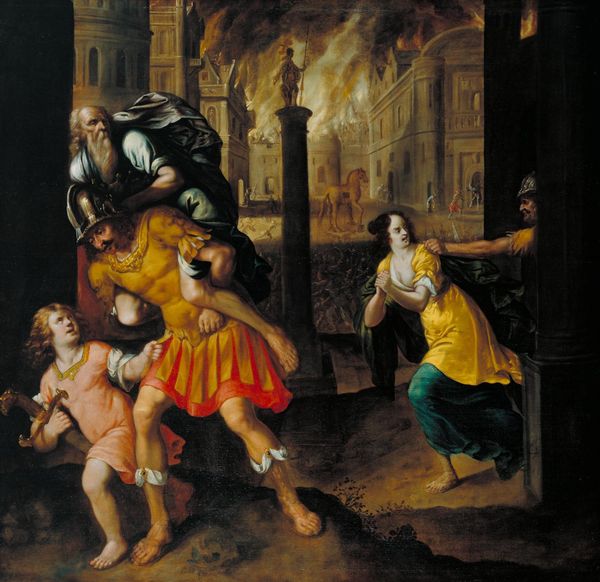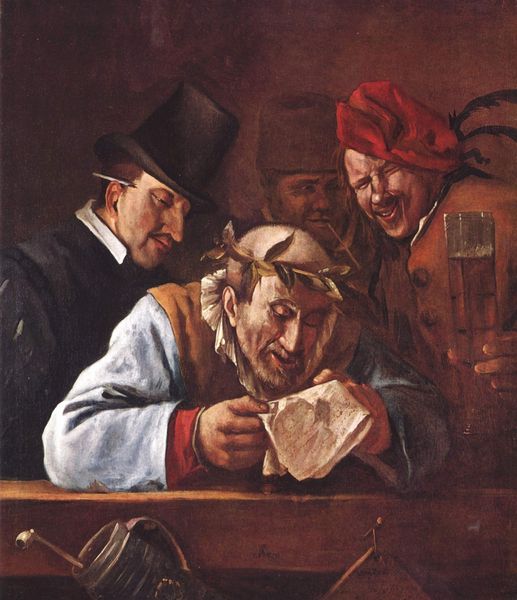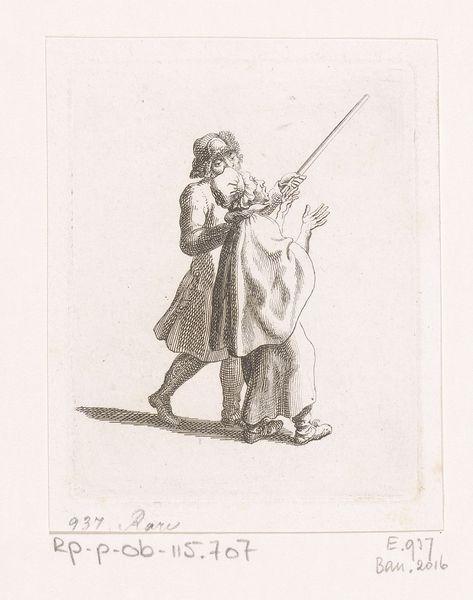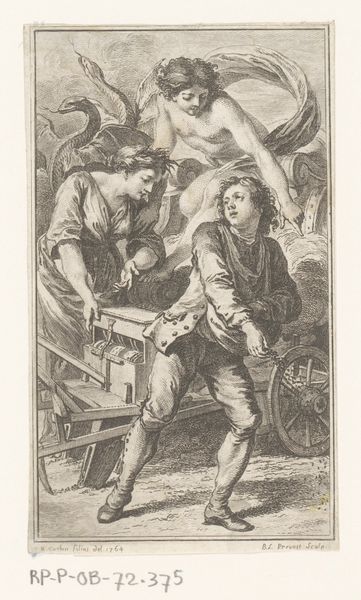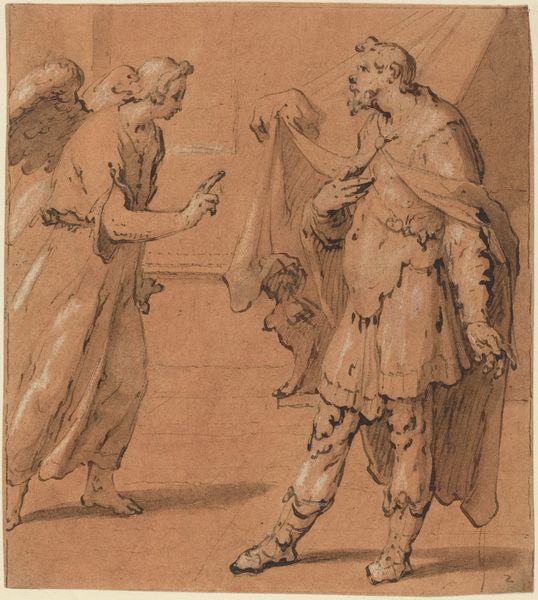
painting, oil-paint
#
portrait
#
baroque
#
painting
#
oil-paint
#
figuration
#
vanitas
#
genre-painting
Dimensions: 89 x 73.7 cm
Copyright: Public domain
Curator: Judith Leyster's "The Last Drop," painted in 1629, presents a fascinating scene that really encapsulates Baroque aesthetics. You can find this oil on canvas masterpiece in the Philadelphia Museum of Art. What stands out to you right away? Editor: Immediately, the strong chiaroscuro. The stark contrast between the dark background and the illuminated figures draws the eye right into their hedonistic display. There's a diagonal tension, a sort of compositional struggle, created by the two figures pulling in different directions across the frame. Curator: Yes, it’s undeniably dramatic. For me, the painting is steeped in symbolic tension, a real memento mori. We see the revelers seemingly oblivious to the skeleton between them holding a skull, representing mortality. It’s a rather explicit vanitas motif, reminding us of life’s fleeting nature. Editor: Precisely. Notice the almost cartoonish skeleton in the center and then consider how that skeletal form practically echoes the draining glass and the smoker’s wisp of smoke, visually uniting those traditionally separate vanitas symbols and deepening the work’s reflective dimension. Curator: The figures' actions, too, support that transience. The man draining the bottle, the upturned hourglass… all signs pointing toward dissipation, not just of wine, but of time and life itself. Even the joyous character's clothes! The unraveling laces are as meaningful and melancholic to me as the skull between them. The revelers clearly indulge without thinking. Editor: That unrestrained nature practically leaps from the canvas, yet when analyzing Leyster's tonal work, one must pause over that deep green, somber backdrop. It acts almost as a curtain or stage flat emphasizing that there may be performance in play within "The Last Drop." Curator: A fitting note. In a society obsessed with virtue, her composition carries more significance, not just reminding us of life's brevity, but showing our place in this dance. I see something meaningful in this dramatic presentation of inevitable decay, urging consideration, contemplation. Editor: Exactly. Viewing Leyster’s visual arrangement from the Baroque era gives me so much insight, not merely into the painting but our ever-developing relationship to these time-worn themes of impermanence and joy.
Comments
No comments
Be the first to comment and join the conversation on the ultimate creative platform.
